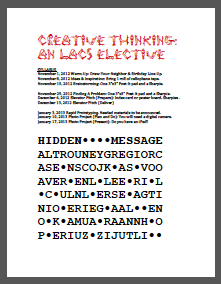WSJ: How to Avoid a Bonfire of the Humanities
Sunday, November 4th, 2012Michael S. Malone contributed an article titled “How to Avoid a Bonfire of the Humanities” to the Opinion section of the October 25, 2012 issue of the WSJ. The article describes how disciplines in the humanities are resurgent in necessity to innovation. A specific example is cited with a quote from Santosh Jayaram that “English majors are exactly the people I’m looking for.” The thought continues that “storytelling” is a rare talent and today goes a long way towards competitive advantage. I would actually pose this is as great prospects for the hybridization of humanities thinking with science, engineering and business. We have already seen it in various ways – the graphical user interface (GUI) is a hybridization of art and technology. Usability is a hybridization of engineering, design, architecture and psychology.
We can use the notion of “storytelling” with the 90-second elevator pitch approach as well as the executive summary framework from Garage Technology Ventures. Together, youth can learn to be compelling and noticed.

